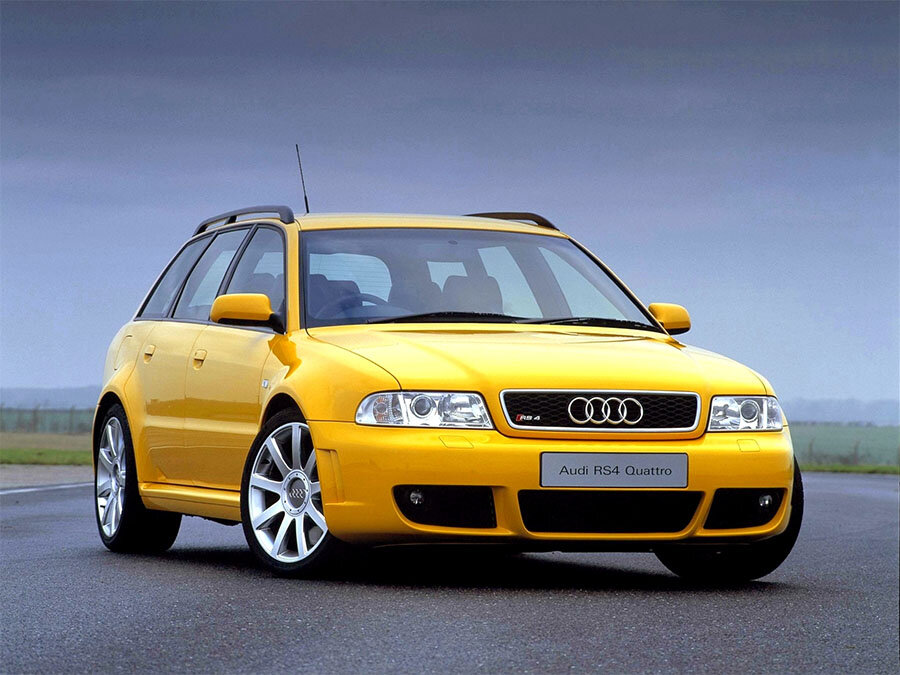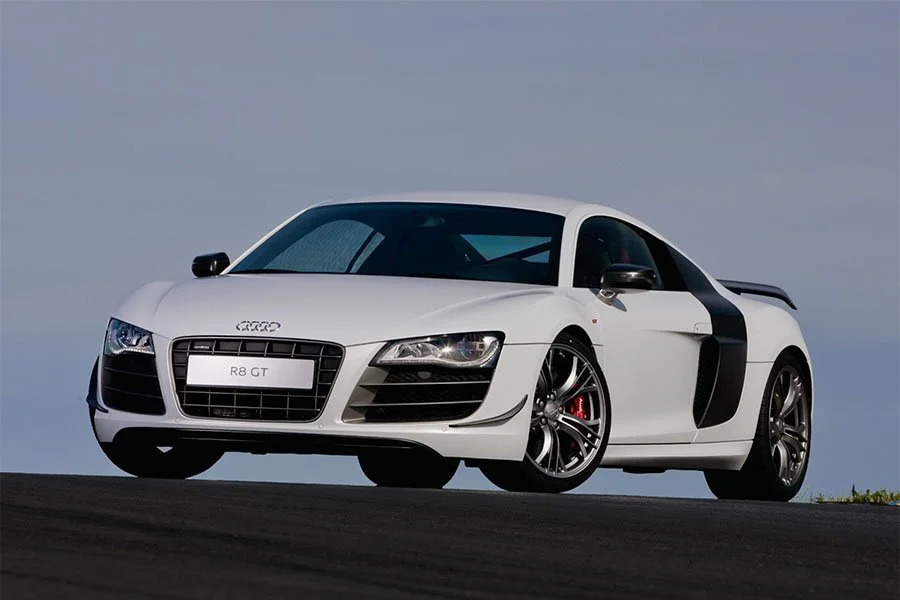Guide: Audi B5 RS4 - a Historical & Technical Appraisal
/BACKGROUND
During the 1980s, the four-wheel drive Quattro helped transform Audi’s image from a builder of utilitarian automobiles to a prestige brand that could rival Mercedes-Benz and BMW.
The Quattro programme was initiated by Ferdinand Piech who had joined the company in 1972 after a prolonged spell at Porsche. Piech was a grandson of Ferdinand Porsche and, prior to his departure from the family firm, had been heavily involved in various motor racing programmes.
Audi offered the Quattro from 1980 through to 1991 during which time nearly 11,500 were produced.
The subsequent B4 80-based S2 built from 1991 was an accomplished machine, but failed to capture the public’s imagination in the same way as the Quattro had.
An even sportier car, the Quattro Spyder concept of 1991, was then killed off late in the day, partly to avoid direct competition with Porsche which was in the midst of a financial meltdown.
Instead of the Quattro Spyder, Piech, who was now chairman and CEO of the Volkswagen Audi Group, instigated a collaboration between Porsche and Audi that would yield one of the most spectacular and unusual high performance cars of the 1990s: the B4 80-based RS2 Avant.
The RS2 was an enormously powerful four-wheel drive Estate that bristled with Porsche technology. Porsche built the car at their Rossle-Bau factory in Zuffenhausen which provided the firm with some much-needed income at a time when sales were in the doldrums.
In the same way that the Quattro had created a market for high performance four-wheel drive cars, the RS2 single-handedly established a genre for Estates with supercar-rivalling performance. Although only 2891 were built between 1994 and 1995, the RS2 has since become one of Audi’s most iconic models.
A replacement for the RS2 was not immediately forthcoming.
In 1994, Audi introduced the A4 on the B5 platform to replace the outgoing 80 range. It proved another breakthrough for the firm; the A4’s handsome looks, spirited performance and excellent build quality made it arguably the most desirable mid-size executive car on the market.
A facelifted A4 was launched at the Frankfurt Motor Show in September 1997 at which point a new flagship, the S4, was added to the line up.
The S4 was offered in both Saloon and Estate body styles. It came with a 261bhp twin-turbocharged V6 that made it a genuine alternative to a BMW E36 M3 or AMG Mercedes-Benz C-Class (W202).
However, Audi had an even more extreme variant up their sleeve.
The B5 RS4 was unveiled at the Frankfurt Motor Show in September 1999.
A true successor to the bonkers RS2, the RS4 was similarly available only as an Estate and with full-time four-wheel drive. Its 376bhp engine was the result of a collaboration with Cosworth in England while the rest of the package was honed by Quattro GmbH in Neckarsulm.
CHASSIS
The RS4 was based on the standard B5 pressed steel bodyshell. This had a wheelbase of 2607mm which allowed plenty of cockpit space for five adults.
Independent suspension was via a multi-link MacPherson strut arrangement at the front and double wishbones at the rear. Compared to the S4, the springs and dampers were stiffened as were the anti-roll bars.
The drilled and vented discs were of 360mm diameter with twin piston floating calipers at the front. Those at the back had a 312mm diameter and single-piston floating calipers. Sports brake pads were also fitted.
New nine-spoke wheels measured 18 x 8.5-inches. Compared to the S4, track was 51mm wider at the front and 40mm wider at the rear.
A 62-litre fuel tank from the standard A4 was fitted under the rear seats.
ENGINE / TRANSMISSION
For the engine, Audi turned to Cosworth who developed and manufactured a monstrously powerful version of the existing twin turbocharged 90° V6.
Like the S4, the longitudinally mounted motor displaced 2671cc thanks to a bore and stroke of 81mm and 86.4mm respectively. Similarly, dual overhead camshafts were employed along with five valves per cylinder.
Otherwise though, the RS4 engine was pretty much all new.
It featured a reinforced cast-iron block with Cosworth’s own aluminium alloy cylinder heads. The pistons, connecting rods, camshafts, bearings, intake manifolds, injectors, throttle body and ductwork were all unique to the RS4. There were also a pair of bigger side-mounted intercoolers for the two parallel Borg Warner K04 turbos that replaced the K03 type used on the S4.
A big bore exhaust system was installed and the Bosch Motronic ME 1.7 engine control unit was re-mapped for optimal performance. Bosch also supplied the multipoint sequential fuel-injection and E-Gas electronic drive-by-wire throttle.
The engine oil was cooled by dual oil-water and oil-air radiators. Compression was lowered from 9.3:1 on the S4 to 9.0:1.
Whereas the S4 engine produced 261bhp at 5800rpm, the RS4 motor pumped out 376bhp at 7000rpm. The torque rating went from 295lb-ft at 3600rpm to 325lb-ft at 6000rpm.
Transmission was via a six-speed manual gearbox coupled to a new clutch, a new flywheel and Audi’s Torsen-1 four-wheel drive system with ATB centre differential. This delivered a 50:50 torque split as standard although up to 75% of the drive could be sent to either axle depending upon driving conditions.
BODYWORK
While the A4’s build quality and specification played a large role in explaining its popularity, arguably the biggest reason was its handsome styling. The A4 looked fresher than the previous best in class (the BMW E36 3-series) and customers flocked to Audi showrooms around the world.
With its pumped up demeanour and 18-inch wheels, the sporty RS4 was effectively on S4 Avant on steroids.
The doors, hood, fenders, side sills and bumpers were unique to the new model while the rear spoiler was imported from the S4. Cooling was improved thanks to large vents cut from the bumpers at either end.
Compared to the S4, the RS4 was 66mm wider.
Xenon High-Intensity Discharge headlights were standard along with body colour exterior mirrors and roof rails. The roof rails and side glass frames could be ordered in black or silver.
INTERIOR
Inside, the RS4 was equipped to a very high specification with leather upholstery, air-conditioning, heated seats and electric everything.
All the instrumentation was housed in a curved binnacle behind the three-spoke leather-rimmed steering wheel.
On the left was a large RS4-branded 8000rpm tach. To the right was a 310kmh / 200mph speedometer. Smaller gauges for oil temperature, water temperature, fuel and battery condition were also present. In the centre of the instrument binnacle was a digital read out that provided the driver with additional information.
Heavily bolstered Recaro front seats were included in the price and unique the the RS4.
OPTIONS
Optional extras included Recaro bucket seats with alcantara centres, an alcantara steering wheel rim and gear lever knob, 18 x 7.5-inch winter wheels, a sunroof, satellite navigation, Nappa leather and wooden cockpit inserts.
WEIGHT / PERFORMANCE
Although the RS4 was 110kg heavier than the S4 (1620kg compared to 1510kg), it was considerably faster. Audi quoted a 0-62mph time of 4.9 seconds while top speed was limited to 155mph.
PRODUCTION
Production took place from May 2000 to September 2001 by which time 6030 RS4s had been built. Of these, around 500 were right-hand drive.
Despite this commercial success, Audi did not offer an RS4 on the subsequent B6 platform manufactured between late 2000 and 2005.
It was not until the B7 arrived that the RS4 was reintroduced. By this time, customers could specify either Estate or Saloon bodywork.
Text copyright: Supercar Nostalgia
Photo copyright: Audi - https://www.Audi.com


































